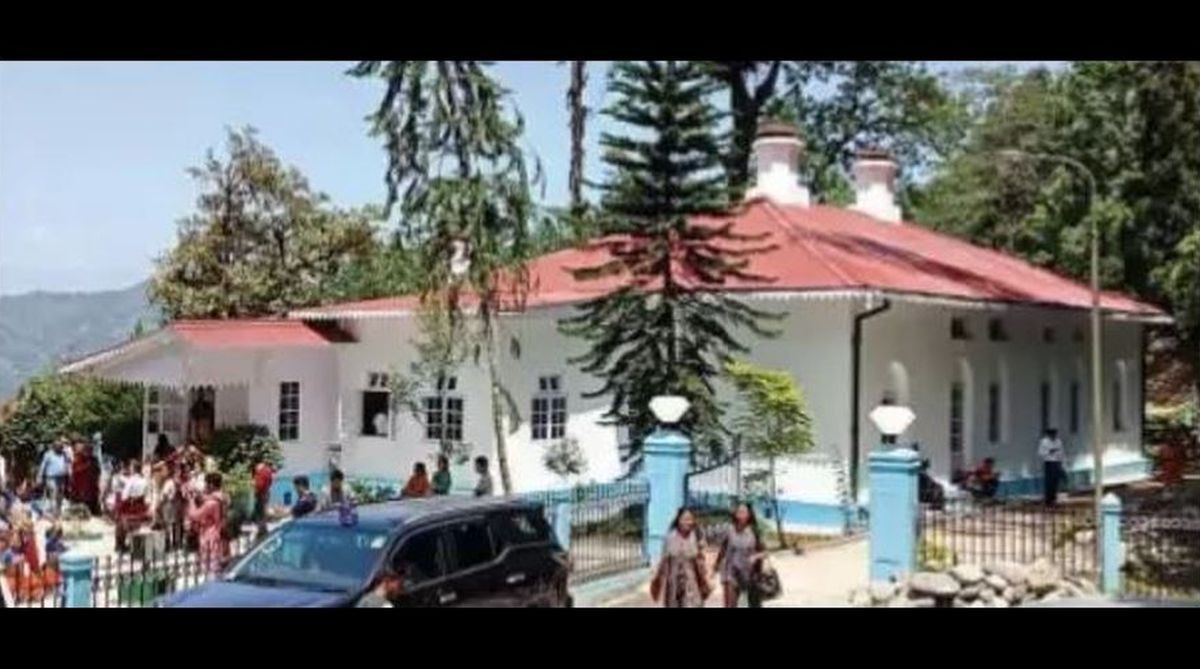Balmiki Pratibha takes the final bow with its 100th act
On Sunday, 17 November, Rabindra Sadan witnessed the 100th and final staging of Balmiki Pratibha, Rabindranath Tagore’s timeless tale of redemption.
Controversy over some missing original items used by the poet during his stay at Mungpo.

(Photo: SNS)
There are no proper records of Rabindra Bhawan at Mungpo since the early history of Tagore’s visit to Darjeeling Hills, a top historian in the state has said.
Terming it ‘unfortunate,’ Dr Ananda Gopal Ghosh, who was the coordinator of the North Bengal University’s Heritage Project in 2012, said that the early history or the past and the present history is not clear. “There is no proper record of materials used by Tagore. This is unfortunate,” he said.
Advertisement
Dr Ghosh said he visited Rabindra Bhawan in Mungpo as a tourist in 1982 and saw “many things” related to Rabindranath Tagore, including his dresses like the Tibetan robe.
Advertisement
He was taken aback when he came to know that the robe was not displayed at the museum even before renovation of the building, which started in 2016 under the supervision the West Bengal Heritage Commission under the Information and Cultural Affairs department.
“We reached Mungpo in massive rain in 1982 and visited the place, including the museum. We saw many items there, including the Tibetan robe and a homeopathy medicine box,” Dr Ghosh said.
It may be mentioned here that authorities took still and video photographs of the entire area, every nook and corner of the museum before the renovation of the building where the bard stayed during his visits to the Hills. The photographs were taken to maintain a record of the structure and items, which were displayed at the then dilapidated Bhawan.
However, “unfortunately, there was no photograph or record (during the time of listing of the displayed items),” reliable sources said.
However, controversy has cropped up over some original items that have allegedly gone missing at the present set-up at Mungpo, like Tagore’s ‘bio-chemic’ medicine box, a colour painting box, his dresses, and newspapers.
“That time, a list of items was prepared, and all were kept in safe custody after formation of a committee. Director of Cinchona plantation Dr Samuel Rai wrote a letter to us about some items, which were damaged,” the secretary of the West Bengal Heritage Commission, Umapada Chatterjee, said.
“The Commission appointed consultant Arunendu Banerjee who took a letter from me and went to Visva Bharati. He collected fresh (replicated scripts) items from Visva Bharati and displayed them there,” Mr Chatterjee added.
“As far as I know, according to Dr Rai, the memorabilia like medicine box were displayed in the museum after renovation,” he said.
On the Tibetan robe, Mr Chatterjee said: “It did not come to my knowledge. Dr Rai will be able to say about it.” Dr Rai was not available for comment on this on Monday.
However, Mr Banerjee, an expert on Rabindranath Tagore, said: “I did not notice a Tibetan robe as we took video footage of the place to maintain a record of the existing items.”
Sources said some items are under ‘lock and key’ as per museum rules. “Similarly, conservation of a newspaper printed during World War- II is very tough. As a result, it was kept in a safe place,” the sources added.
They further said that all items (over 200), which were collected from Visva Bharati, were not related to the house in Mungpo where Rabindranath Tagore stayed.
All 200 items were not displayed due to space constraints during the inauguration of the renovated structure, while the function was organised by building a temporary gallery on 9 May this year.
Advertisement